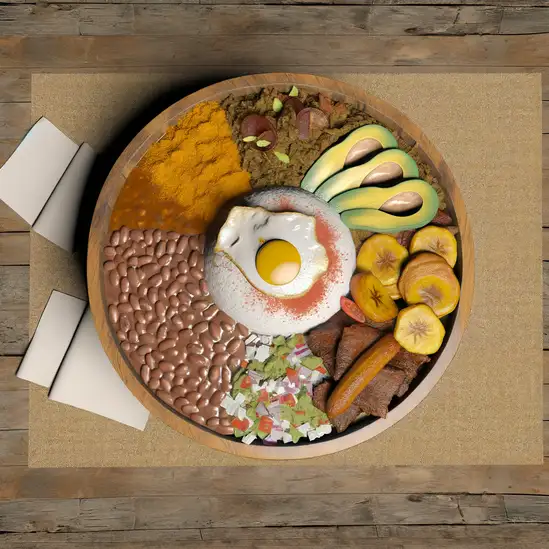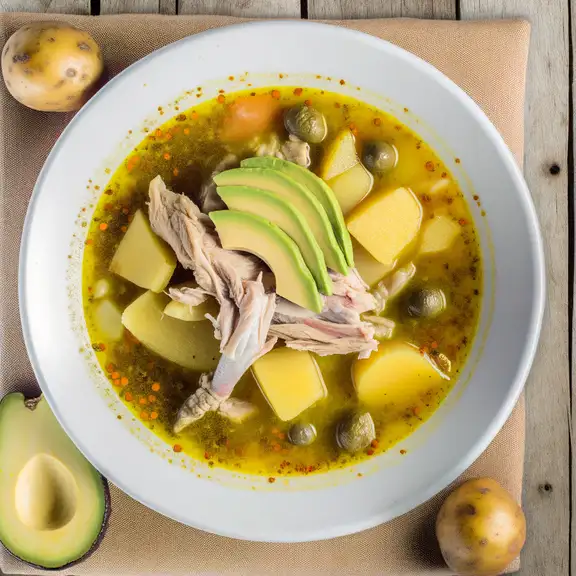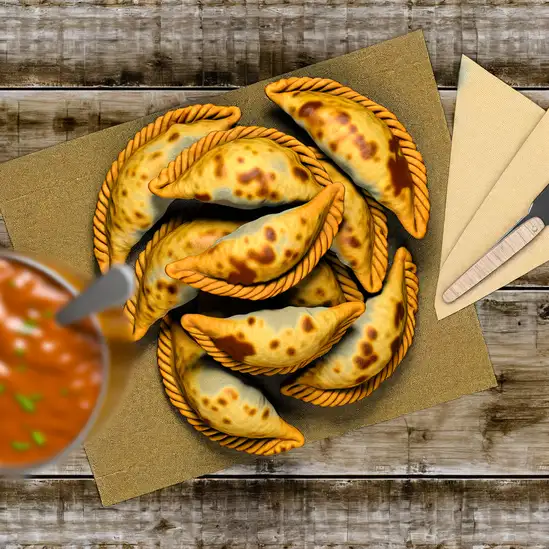



If you ever find yourself dreaming of a place where the energy feels alive but never overwhelming,Medellín is that rare city that wraps you in a warm,vibrant hug the moment you arrive. Nestled in a lush valley surrounded by emerald mountains,the air carries a fresh,earthy scent mixed with the sweet aroma of blooming flowers and the distant hum of salsa music drifting from open windows. Walking through its neighborhoods,you’ll notice how the city pulses with life—colorful street art splashes across walls,and locals chat animatedly over cups of rich,dark coffee that tastes like a little piece of heaven. What really makes Medellín special is its spirit of transformation and resilience. The people here are incredibly welcoming,always ready with a smile or a story about their city’s journey from its past to the vibrant cultural hub it is today. You can feel this optimism in the lively plazas where artists perform,in the bustling markets filled with fresh tropical fruits,and in the innovative cable cars that whisk you up the hills,offering breathtaking views of the sprawling city below. Don’t miss the chance to savor bandeja paisa,a hearty local dish that’s as bold and comforting as Medellín itself. Whether you’re wandering through the trendy El Poblado district or exploring the historic charm of Laureles,the city invites you to slow down,soak in its rhythms,and discover a place that’s as warm and dynamic as the people who call it home.
The information on this page is currently being reviewed by Tripkliq and should be used as a guide only
Eng word: Hello
Eng pronunciation: OH-lah
Local language: Hola
Eng word: Goodbye
Eng pronunciation: ah-DYOS
Local language: Adiós
Eng word: Thank you
Eng pronunciation: GRAH-syahs
Local language: Gracias
Eng word: How much
Eng pronunciation: KWAN-toh KWEH-stah
Local language: ¿Cuánto cuesta?
Eng word: Toilet
Eng pronunciation: BAH-nyoh
Local language: Baño
Eng word: Help me
Eng pronunciation: ah-YOO-dah-meh
Local language: Ayúdame
Eng word: Yes
Eng pronunciation: SEE
Local language: Sí
Eng word: No
Eng pronunciation: NO
Local language: No
Eng word: Excuse me
Eng pronunciation: pehr-DOHN
Local language: Perdón
Founded on March 2,1616, by Francisco Herrera y Campuzano, Medellín was initially called San Lorenzo de Aburrá and later named Villa de Nuestra Señora de la Candelaria.
Medellín is fondly referred to as the 'City of Eternal Spring' for its pleasant weather year-round, with an average temperature of 22°C (72°F).
This famous plaza is home to 23 sculptures donated by Fernando Botero, a native of the city, showcasing his distinct style of voluminous figures and becoming a symbol of pride for Medellín.
Opened in 1995, the Medellín Metro is notable for being Colombia's only metro system, symbolizing the city's growth and modernization. It's not just a transportation method but a source of pride for locals.
Since 1957, the city has hosted the annual Feria de las Flores (Flower Festival), a vibrant celebration that showcases the region's rich floral diversity, including the famous 'silleteros' parade.
In recognition of its remarkable transformation and innovative urban development policies, Medellín was named the 'Most Innovative City of the Year' in 2013 by the Urban Land Institute.
Each December, Medellín becomes a wonderland of light with the Alumbrados Navideños, a spectacular holiday lights display that attracts visitors from all over the world.
Once known for high levels of violence, Comuna 13 has transformed into a vibrant community filled with colorful street art, music, and innovation, symbolizing Medellín's resilience and capacity for change.
The Metrocable, an aerial cable car system integrated into the city's metro network, was introduced to help residents in hillside neighborhoods access the city center more easily, reflecting the city's commitment to inclusivity.
In Medellín, the most common Power Adaptor is Type A, Type B.



A hearty platter that includes rice, beans, ground meat, chicharrón (fried pork belly), plantain, avocado, and a fried egg, often served with arepas.

A traditional soup made with meat (usually chicken or beef), plantains, yuca, and corn, seasoned with herbs and spices.

Cornmeal cakes that can be grilled, baked, or fried, often filled or topped with cheese, meats, or avocado.

A chicken and potato soup that includes corn and is flavored with guascas, a local herb, typically served with avocado and capers.

Fried or baked pastries filled with a variety of ingredients, such as beef, chicken, or cheese, often served with aji sauce.

Twice-fried green plantains that are crispy on the outside and soft on the inside, often served as a side dish or snack.

A sweet treat made from guava paste, often enjoyed as a snack or dessert, sometimes paired with cheese.

A slow-cooked beef dish marinated in a rich sauce made with cola, spices, and herbs, typically served with rice and fried plantains.
Cartagena de Indias feels like stepping into a vibrant,sun-soaked painting where every corner bursts with color and life. The moment you wander through its cobblestone streets,you’re wrapped in the warm embrace of colonial charm mixed with Caribbean energy. Brightly painted balconies overflow with bougainvillea,and the salty breeze carries the distant rhythm of cumbia and salsa,inviting you to move with the city’s heartbeat. It’s a place where history isn’t just in museums—it’s alive in the laughter spilling from open-air cafes and the clinking of glasses filled with tangy,refreshing aguardiente.
As you stroll along the ancient city walls,the scent of grilled seafood mingles with tropical fruit from street vendors,tempting your taste buds to dive into fresh ceviche or a juicy mango. The sun sets in a blaze of orange and pink over the bay,and the city lights flicker on,casting a golden glow that makes every evening feel magical. Locals greet you with genuine warmth,eager to share stories about Cartagena’s rich past and vibrant present.
What makes Cartagena truly unforgettable is its blend of old-world romance and lively modern spirit. From the bustling plazas where artists display their work to the quiet corners where you can sip a cold cocktail and watch the world go by,the city invites you to slow down and savor every moment. It’s a place that stays with you long after you leave,whispering promises of return.
A Caribbean island paradise famous for its turquoise waters,coral reefs,and vibrant marine life,making it a top destination for beach lovers and divers.
ExploreImagine stepping into a place where the Caribbean sun wraps you in a warm embrace,and the air carries the salty tang of the sea mixed with the sweet scent of tropical fruit. That’s Santa Marta for you—a city that feels alive with a laid-back rhythm,where the past and present dance together effortlessly. Walking through its colorful streets,you’ll hear the lively chatter of locals,the distant strum of a guitar,and the occasional call of street vendors selling fresh arepas or juicy mangoes. It’s a place where time slows down just enough for you to savor every moment.
Santa Marta’s charm lies in its blend of natural beauty and rich culture. The city sits at the edge of the Sierra Nevada mountains,so you can watch the lush green peaks rise dramatically against the bright blue sky. The nearby beaches invite you to dip your toes in warm,crystal-clear waters or lounge under swaying palms while the ocean breeze cools your skin. But beyond the scenery,it’s the people who make Santa Marta unforgettable—their warmth,their stories,and the vibrant festivals that fill the streets with music and color.
If you’re craving a taste of authentic Colombian life,Santa Marta offers it in every bite of freshly caught seafood,every smile exchanged in the plaza,and every sunset that paints the sky in shades of pink and gold. It’s a city that invites you to slow down,breathe deeply,and fall in love with its easygoing spirit.
A modern city with a historic old town,the famous Panama Canal,and access to the San Blas Islands,which are known for their untouched beauty and indigenous culture.
ExploreImagine stepping into a city where the air feels crisp and alive,perched high in the Andes with volcanoes standing guard in the distance. That’s Quito for you—a place where history and modern life dance together on cobblestone streets lined with colorful colonial buildings. The moment you wander through its old town,you’ll hear the lively chatter of locals mingling in plazas,the distant strum of guitars,and the occasional church bell echoing through narrow alleys. There’s a warmth here,not just from the sun but from the people who greet you with genuine smiles and a relaxed pace that invites you to slow down and savor the moment.
Walking around,you’ll catch the scent of fresh coffee mingling with the earthy aroma of nearby markets bursting with vibrant fruits and spices. Don’t miss trying a cup of Ecuadorian coffee paired with a slice of guava-filled empanada—it’s a small taste of the city’s rich flavors. Quito’s character shines in its blend of old and new:centuries-old churches and plazas sit alongside buzzing cafes and art galleries,reflecting a culture that honors its roots while embracing creativity.
What really stays with you is the city’s energy—a mix of history,nature,and everyday life that feels both grounded and inspiring. Whether you’re gazing out over the city from the Panecillo hill or chatting with artisans in La Ronda,Quito invites you to explore deeply and connect with a place that’s as vibrant as it is welcoming.
Lima feels like a city that’s constantly humming with life,where the old and new dance together in the most unexpected ways. Walking through its neighborhoods,you’ll catch the salty breeze from the Pacific mingling with the rich aroma of freshly grilled anticuchos (those delicious skewers of marinated meat). The streets buzz with the chatter of locals,the clatter of street vendors,and the distant strum of a guitar from a nearby plaza. It’s a place where colonial architecture stands proudly beside sleek modern buildings,and every corner seems to tell a story.
What really makes Lima special is its food scene—seriously,it’s a paradise for your taste buds. Imagine biting into a ceviche so fresh it practically tastes like the ocean itself,or savoring a perfectly crispy chicharrón sandwich while sipping on a sweet,tangy chicha morada. The city’s markets are alive with vibrant colors:piles of exotic fruits,heaps of fragrant spices,and the lively banter of vendors inviting you to try their goods. It’s a feast for all your senses.
Beyond the food and sights,Lima’s warmth comes from its people. There’s a genuine friendliness here,a pride in their culture that’s infectious. Whether you’re wandering the bohemian streets of Barranco or exploring the historic center,you’ll feel like you’re part of a living,breathing story. Lima isn’t just a stop on your trip—it’s a place that stays with you long after you leave.
Scammers may install skimming devices on ATMs to steal card information or watch for PIN numbers being entered.
Tourists may be given counterfeit bills or incorrect change when exchanging money or paying for goods and services.
In bars or clubs, drinks may be spiked with drugs to incapacitate tourists, leaving them vulnerable to robbery or other crimes.
Scammers posing as police officers may approach tourists, accuse them of a crime, and demand on-the-spot fines or confiscate valuables.
Some taxi drivers may overcharge tourists by not using the meter, taking unnecessarily long routes, or claiming the meter is broken.
Unlicensed or fake tour guides may offer their services, providing little value or leading tourists into unsafe areas.
Some individuals or companies may offer tours or services at inflated prices, targeting tourists unfamiliar with local rates.
Thieves often target tourists in crowded areas, public transportation, or nightlife spots, stealing wallets, phones, or other valuables.
Locals may approach tourists with fabricated stories of hardship to solicit money or donations.
Street performers or vendors may aggressively demand payment after a tourist takes a photo or interacts with them, even if no prior agreement was made.
The possession, use, and trafficking of drugs are illegal in Colombia, including Medellín. While there have been discussions about decriminalizing small amounts of certain drugs for personal use, the laws are still strict, and penalties can be severe. Tourists should avoid any involvement with illegal drugs to prevent legal issues, including arrest and imprisonment.
In Medellín, as in the rest of Colombia, smoking is prohibited in enclosed public spaces and workplaces, including restaurants, bars, and public transportation. There are designated smoking areas in some public places, but it is important to look for signs indicating where smoking is allowed. Violating these regulations can result in fines.
Vaping is subject to similar regulations as smoking in Medellín. It is prohibited in enclosed public spaces and workplaces. While the enforcement may vary, it is advisable to follow the same rules as for smoking to avoid any issues. Always look for designated areas where vaping might be allowed.
What are other people saying about Medellín?
Recent Social posts about Medellín
There is nothing to show you for now.